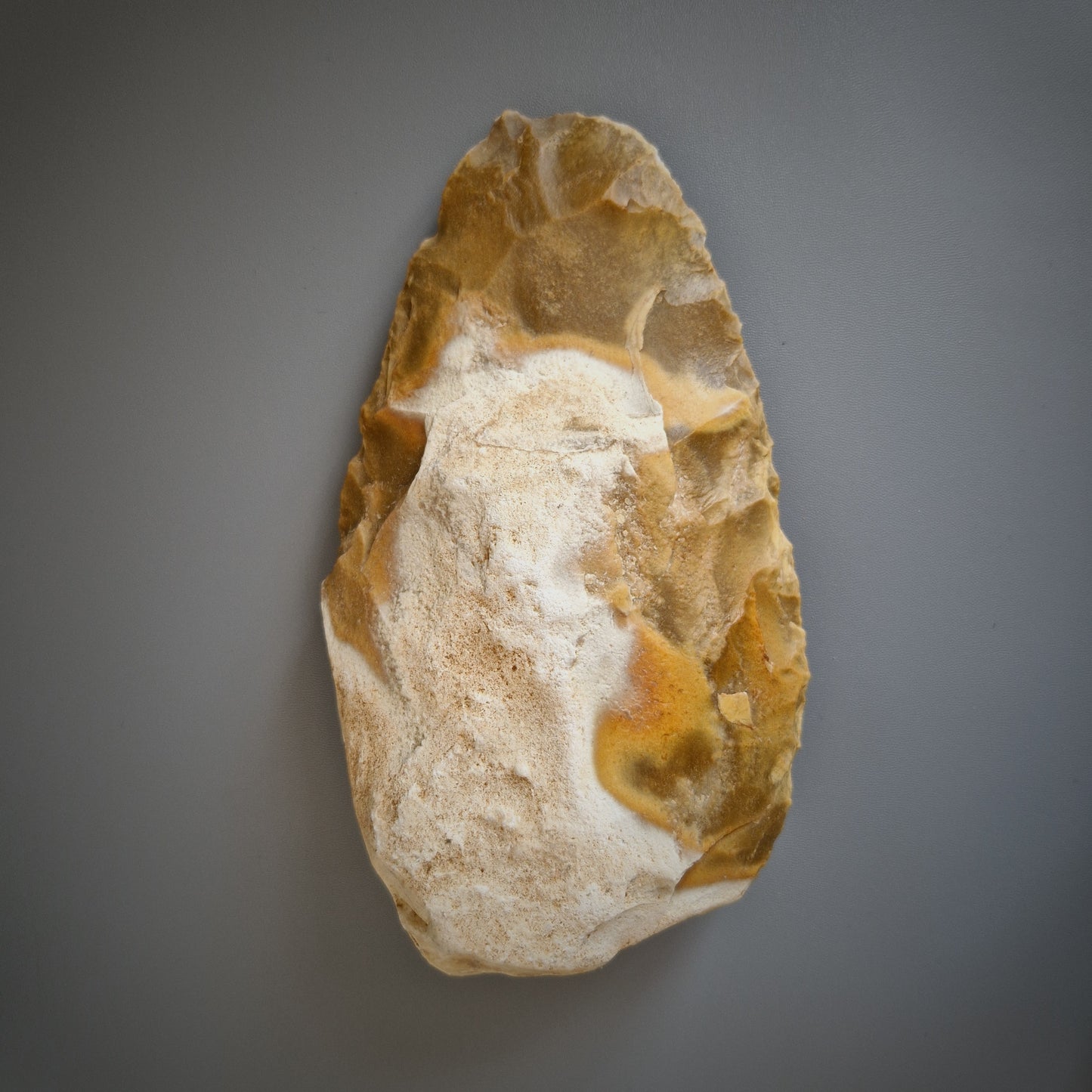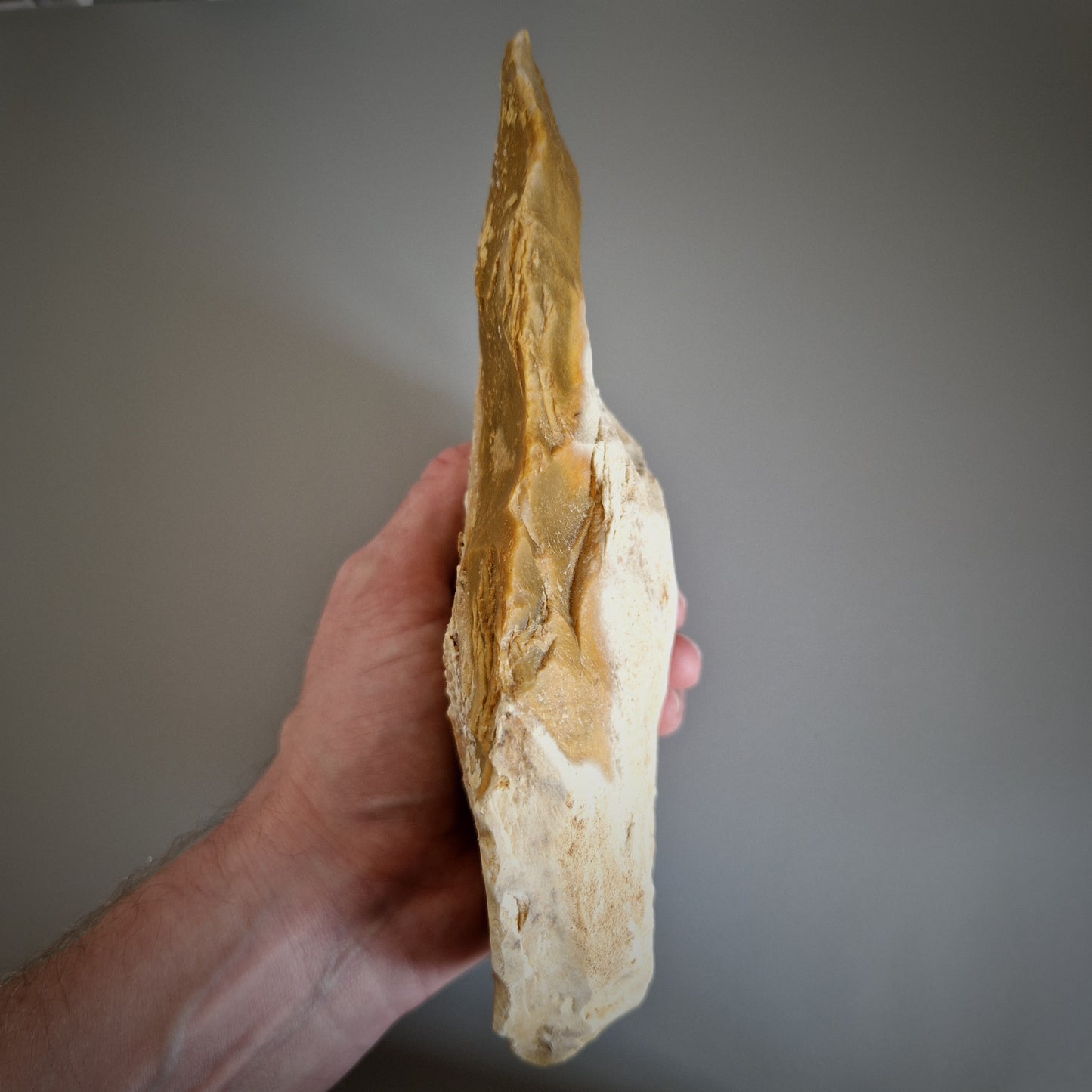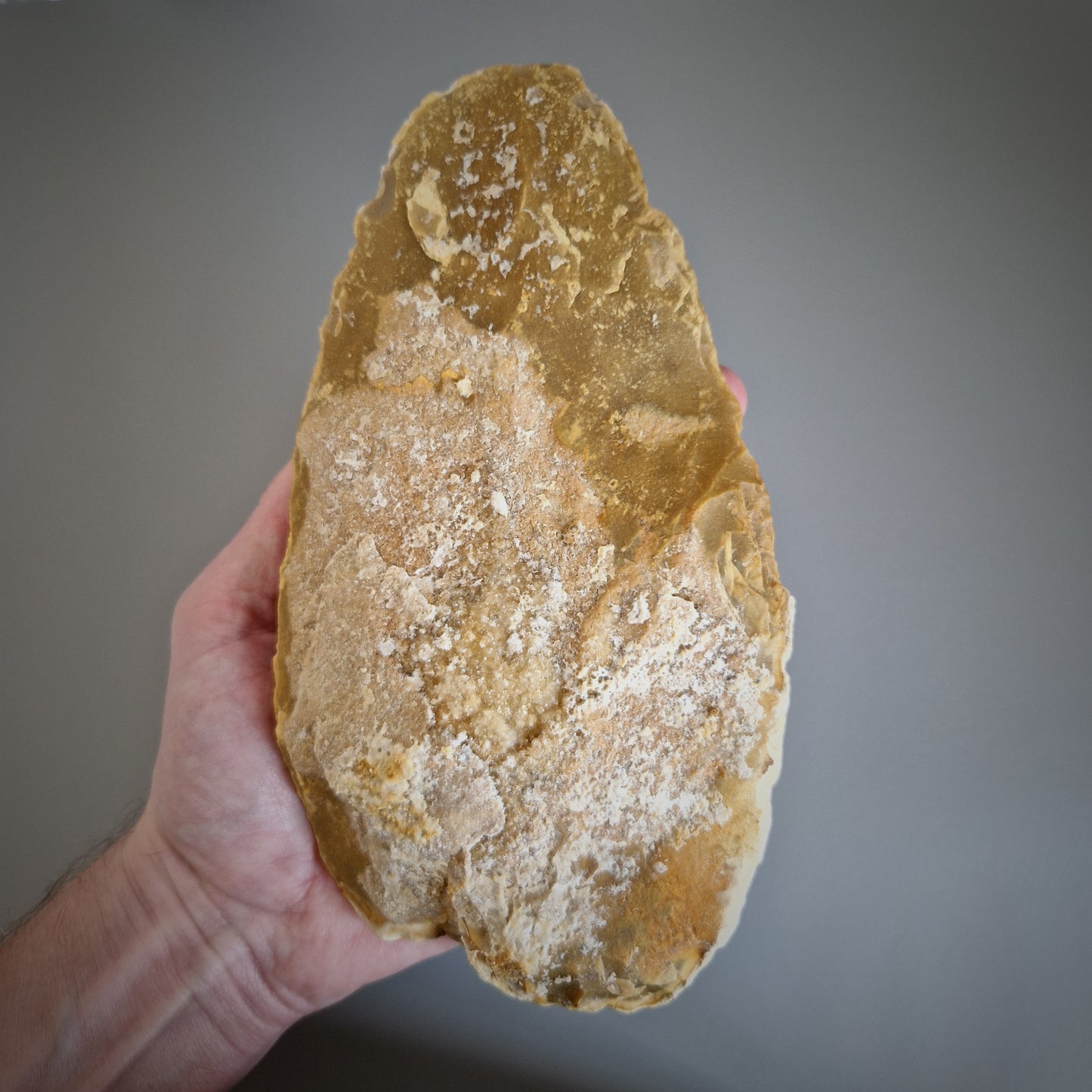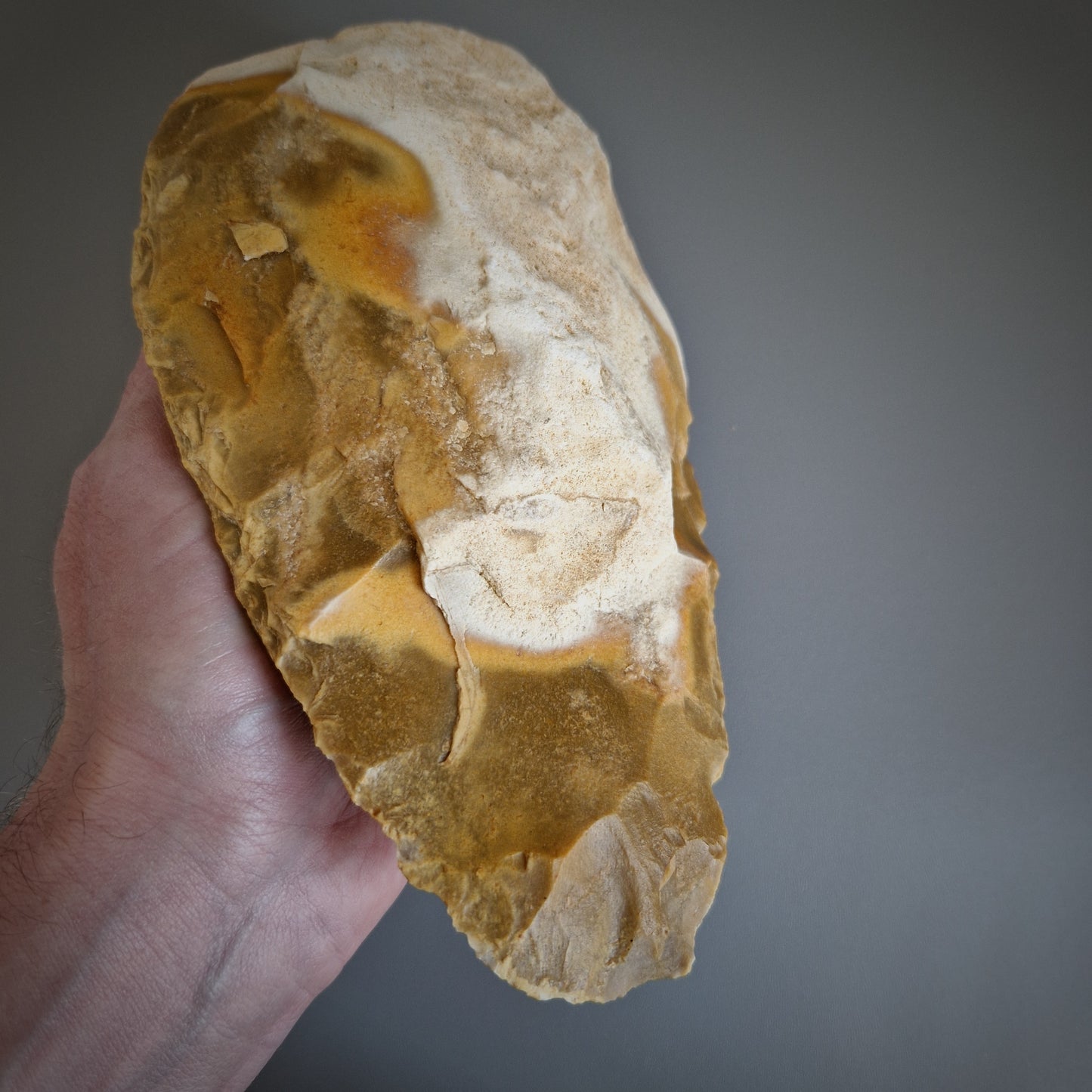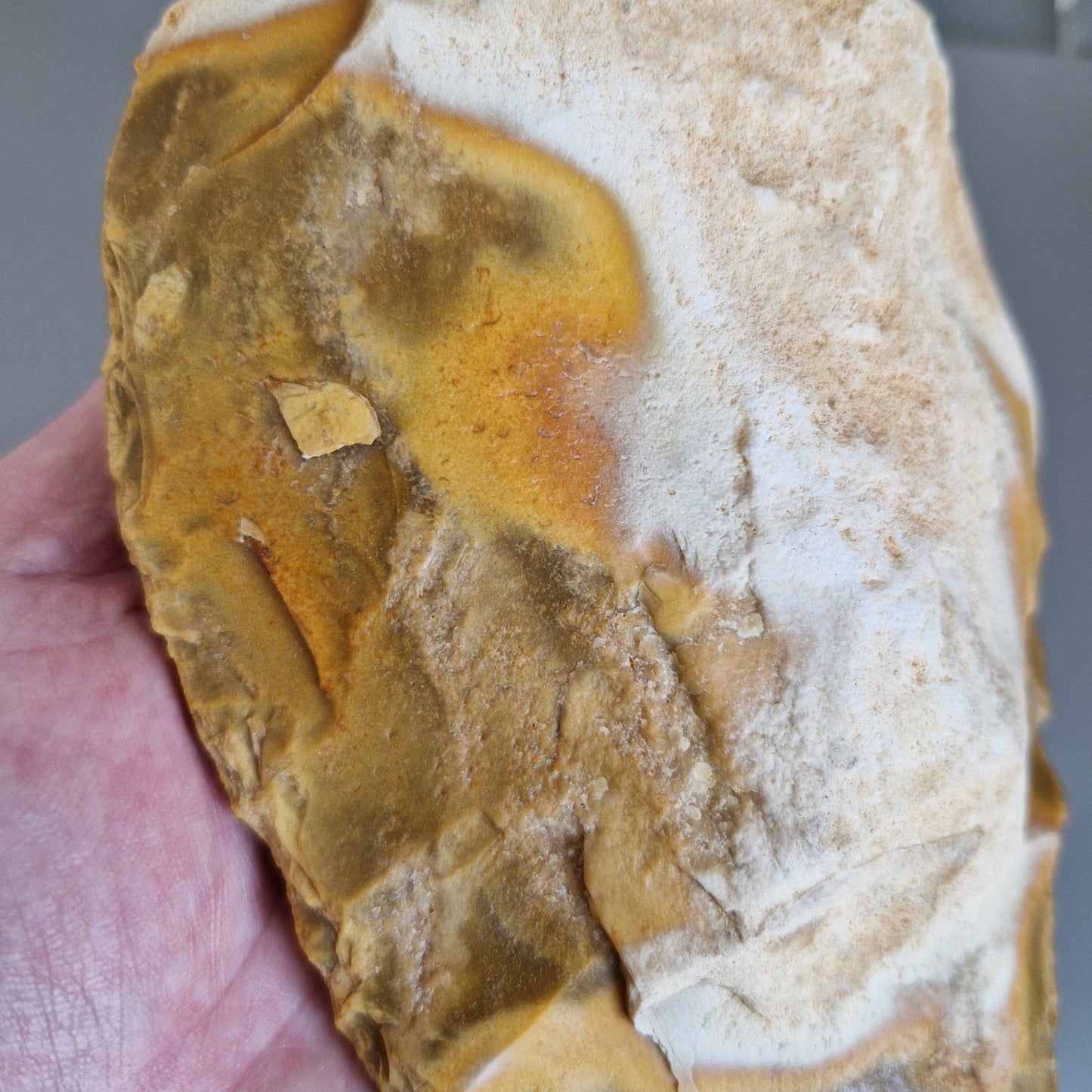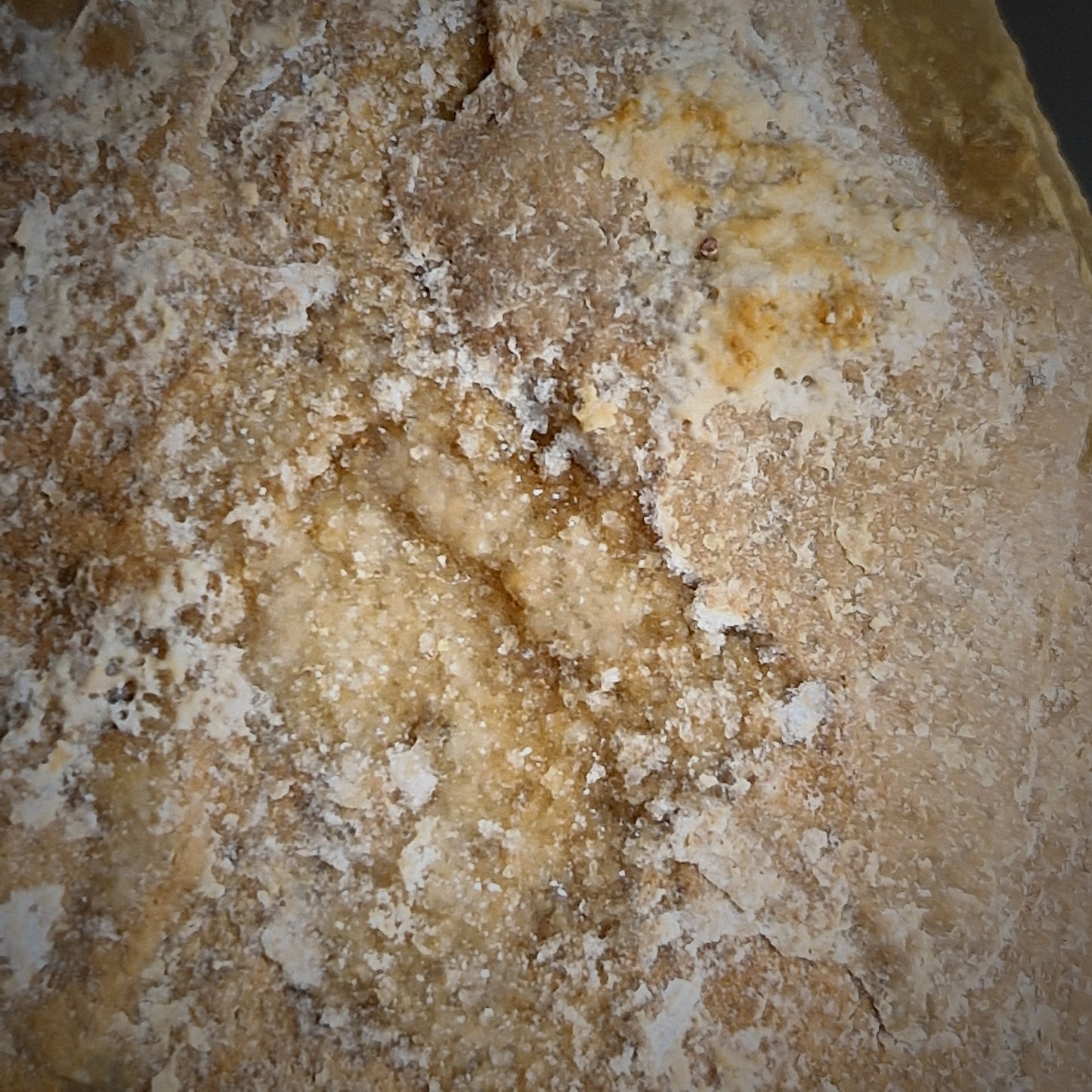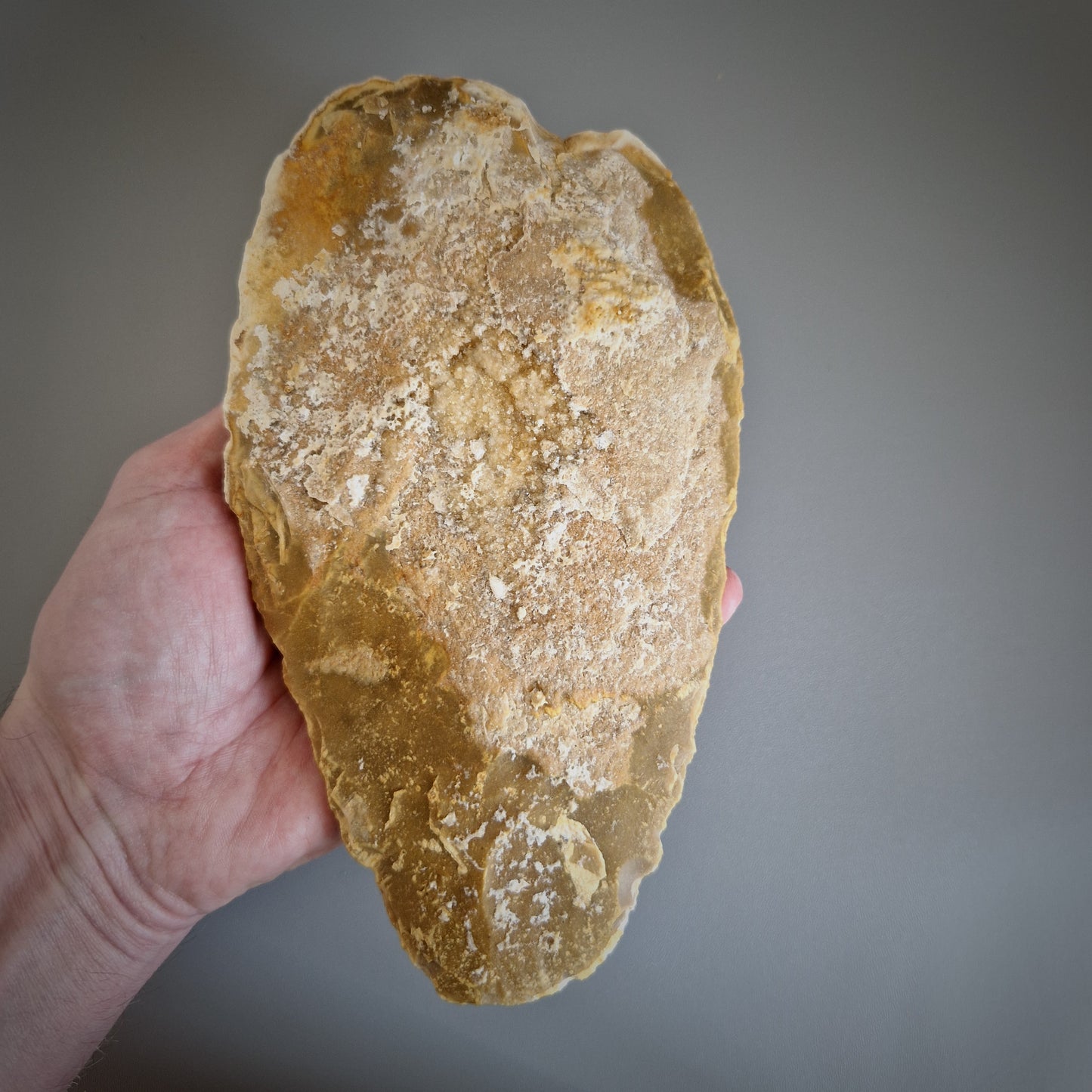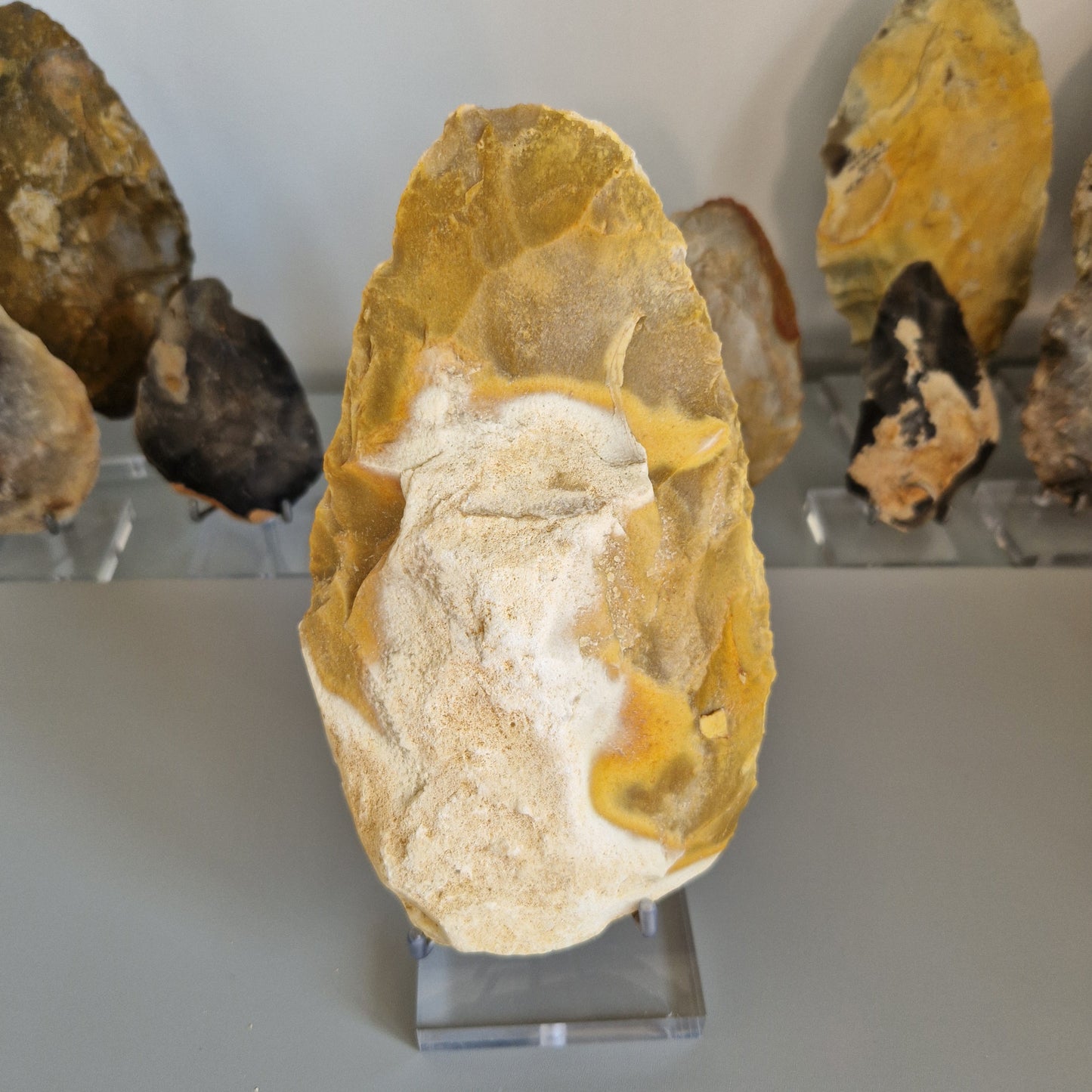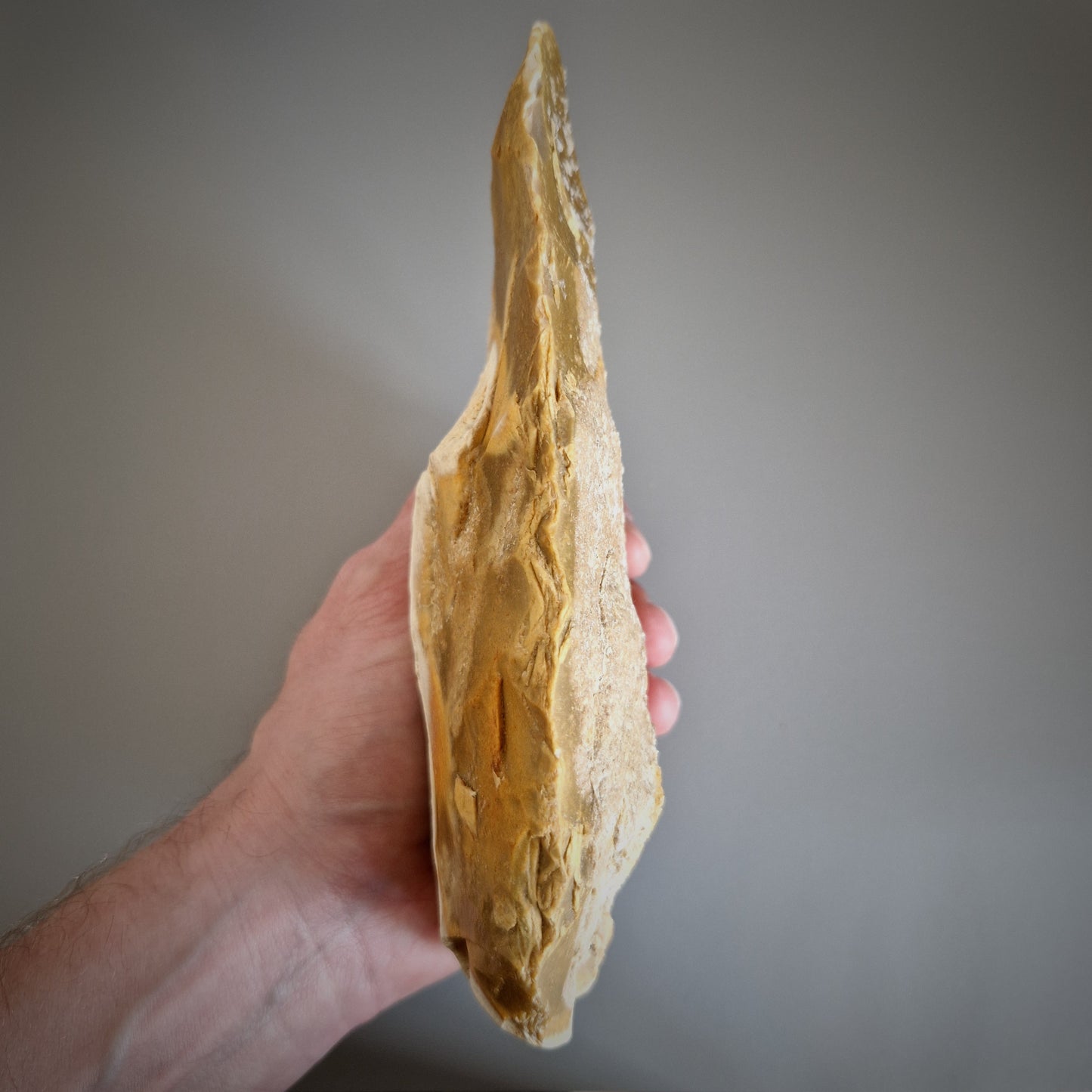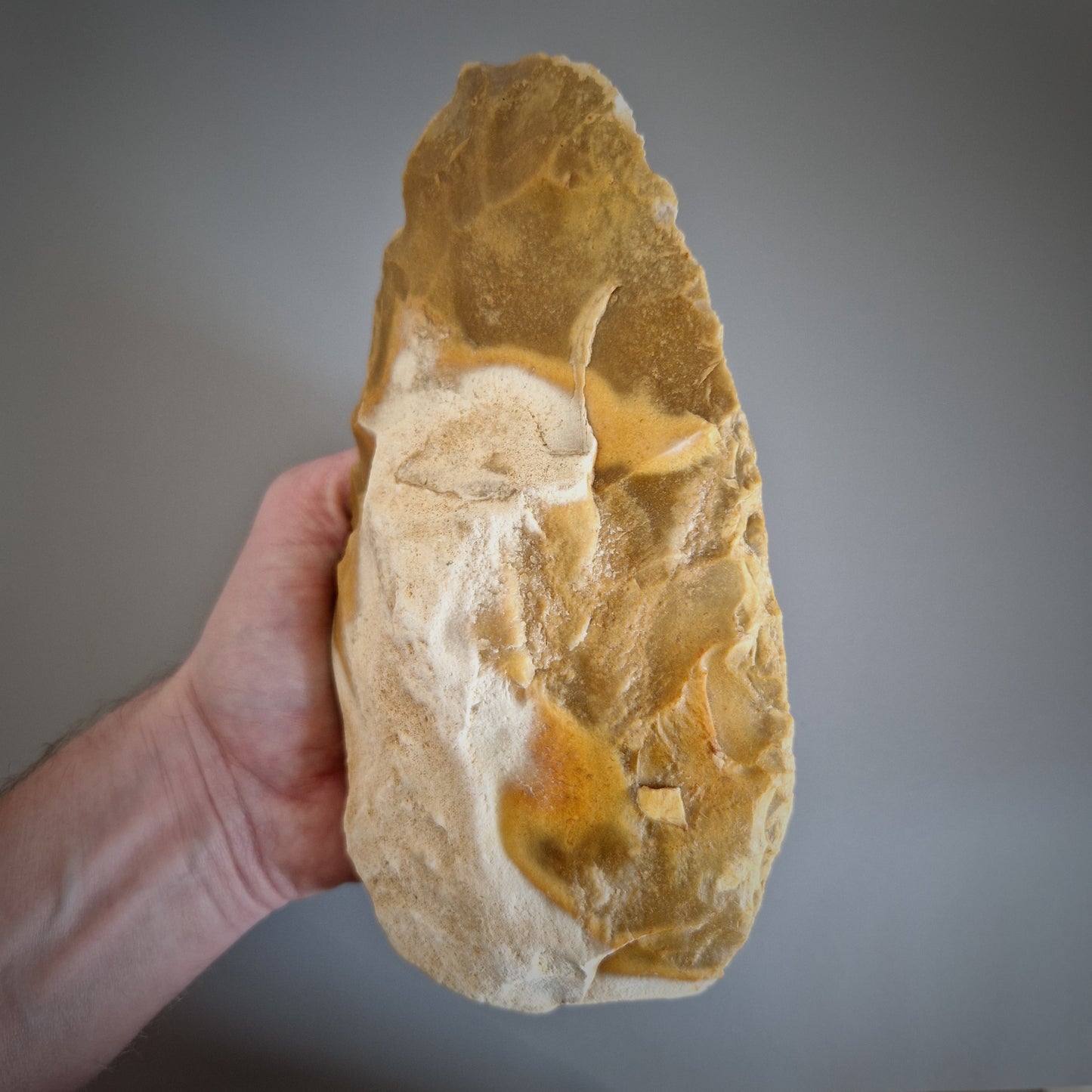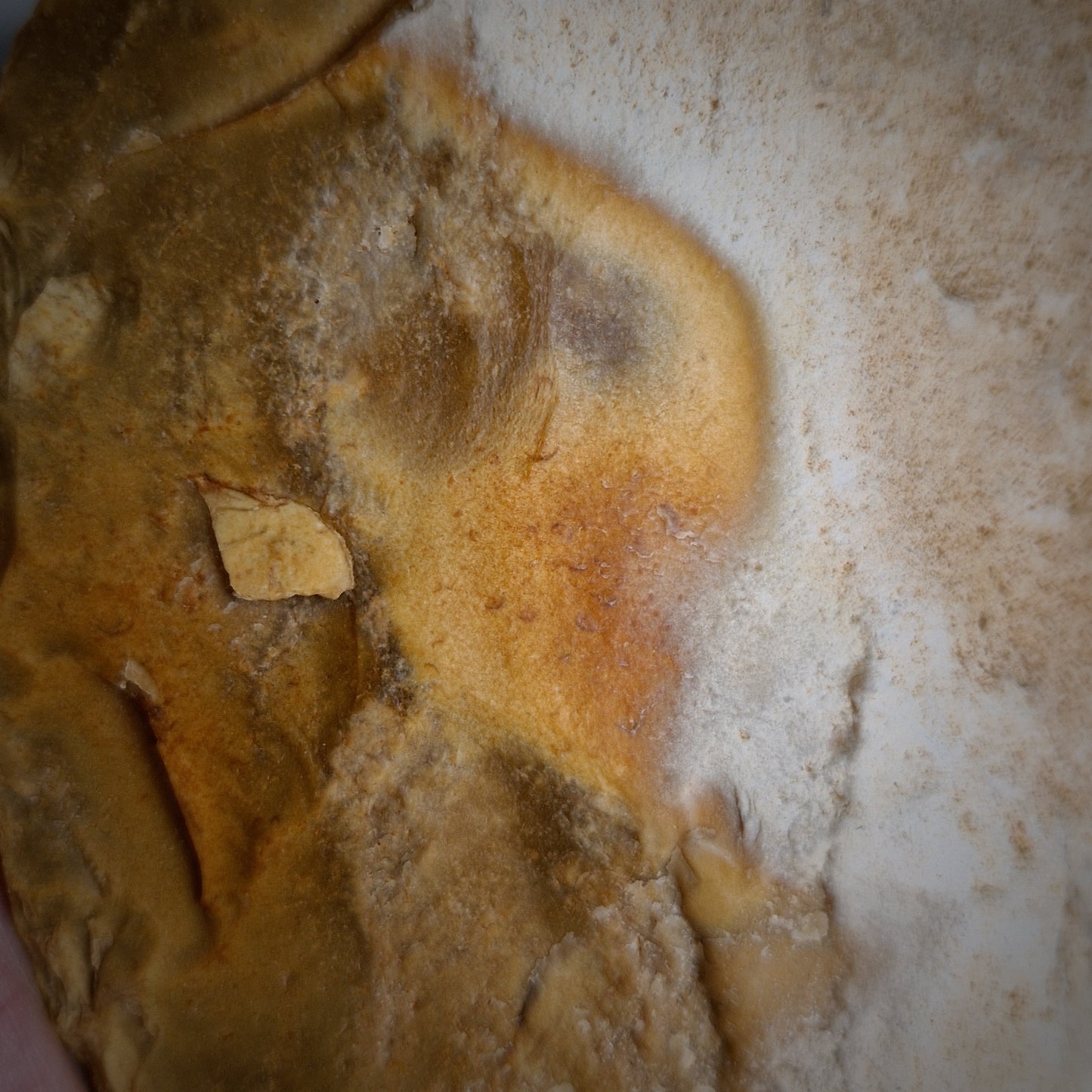Stone Age Artifacts
Gigantic Handaxe from St Meme, Charente- France
Gigantic Handaxe from St Meme, Charente- France
Couldn't load pickup availability
A gigantic Lower Palaeolithic Handaxe/Biface from the famous and desired quarry site of Saint-Même-les-Carrières, Charente- France
Handaxes of this size are not easy to come by, this is a very rare piece with beautiful colours.
This piece has a beautiful silky patina to one side with traces of calcite remaining on the alternate size leaving a slightly rough surface. This has been built up over hundred of thousands of years. There is also a presence of a large fossil sponge which in parts has crystallised.
During the Paleolithic times, handaxes were made for different purposes, this one is so big that there is a potential of it being used for ceremonial purposes.
Attributed to Homo Heidelbergensis.
The quarries here closed in the 1960-70's. There are different terraces of Age which makes the finds varied across hundreds of thousands of years.
One of the most famous and well recognised handaxes in France come from the quarries at St Meme. That one is currently in the Musée national de Préhistoire Les Eyzies-de-Tayac.
20.5cm Long.
11.7cm Wide
1.01kg in weight
Provenance- From an old Belguim collection formed in the mid 1900's.
Circa 450,000 to 250,000 years old.
Prehistoric Age-
Acheulean industry
prehistoric toolmaking
Also known as: Acheulian industry
Written and fact-checked by
Article History
Acheulean industry, first standardized tradition of toolmaking of Homo erectus and early Homo sapiens. Named for the type site, Saint-Acheul, in Somme département, northern France, Acheulean tools were made of stone with good fracture characteristics, including chalcedony, jasper, and flint; in regions lacking these, quartzite might be used. During the Acheulean Stage of the early Paleolithic Period, which began between 1.7 million and 1.5 million years ago and lasted until 250,000 to 200,000 years ago, the presence of good tool stone was probably an important determining factor in the distribution of early humans. In the later stages they learned to bring stone from distant areas and thus became freer in their choice of homesites. “Tool kits” that differ in tool types reflect the varying adaptations made by early Stone Age humans.
Share

